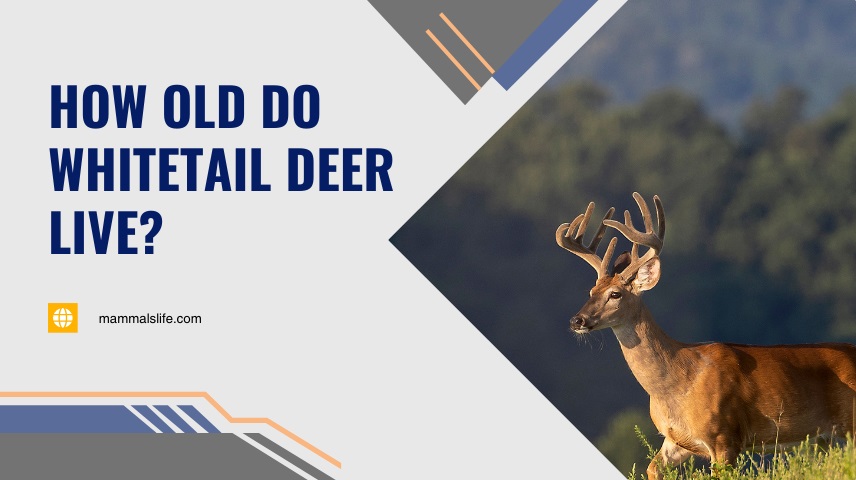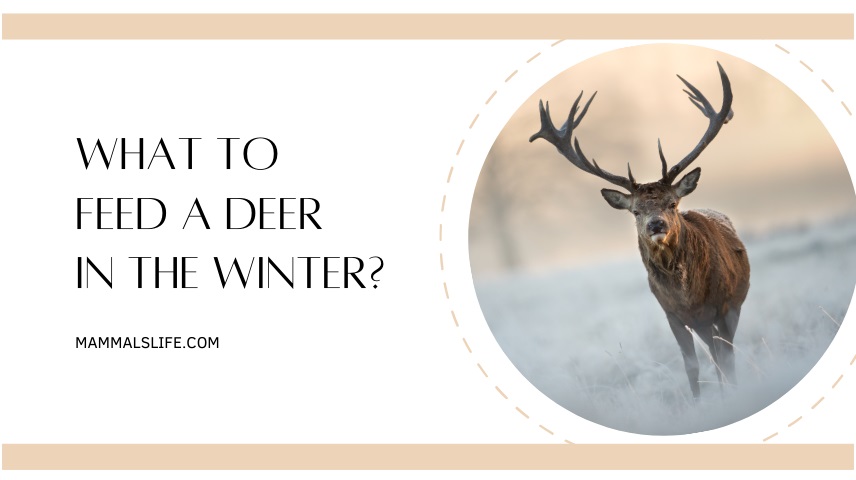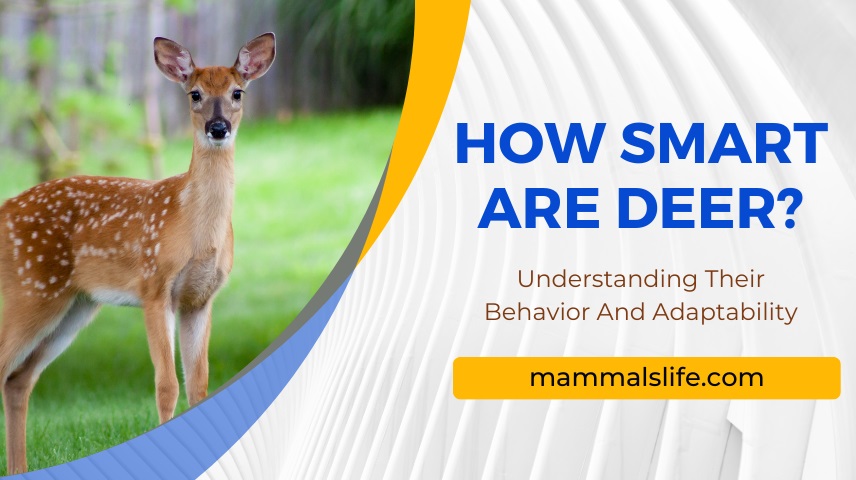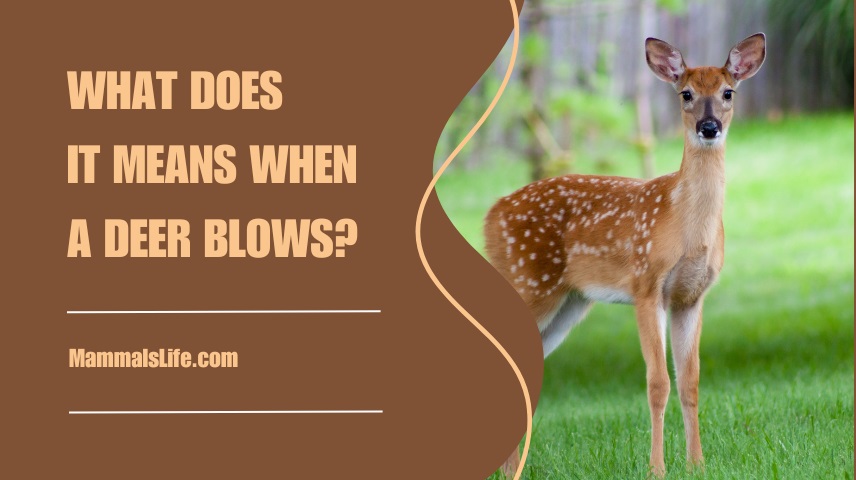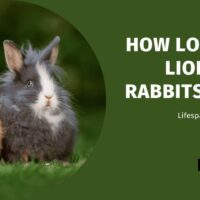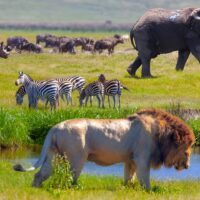Whitetail deer typically live around 6 to 14 years in the wild. Factors like predators, habitat, and disease influence their longevity.
Whitetail deer are a common sight in North America, known for their distinctive white tails. They are a vital part of the ecosystem, contributing to biodiversity. Various factors influence their lifespan in the wild. Predators, such as wolves and humans, play a significant role in their mortality.
Quality of habitat, including food availability and shelter, also impacts their survival. Diseases, both natural and human-induced, can shorten their lives. Understanding these factors helps conservation efforts and ensures the sustainability of their populations. This blog delves into the lifespan of whitetail deer and the key elements affecting their longevity.
Lifespan In The Wild
Whitetail deer are fascinating creatures. They face many challenges in the wild. Their lifespan can vary widely based on several factors.
Average Age
In the wild, whitetail deer typically live between 4 to 5 years. Some may live longer, up to 10 years. Predators and diseases are the main threats to their lifespan. Only a few reach old age because of these dangers.
Regional Differences
The lifespan of whitetail deer varies by region. In areas with many predators, deer live shorter lives. In places with fewer threats, they live longer.
| Region | Average Lifespan |
|---|---|
| Northern U.S. | 4-6 years |
| Southern U.S. | 2-4 years |
| Urban Areas | 8-10 years |
Deer in urban areas live longer. They face fewer predators and have more food sources. In contrast, rural areas have more threats, reducing their lifespan.
- Food Availability: More food means healthier deer.
- Predators: Wolves, coyotes, and humans shorten deer lives.
- Climate: Harsh winters can affect their survival.
Understanding these factors helps us appreciate the challenges deer face in the wild.
Read More – Do Whitetail Deer Shed Their Antlers? A Guide to the Shedding Process
Lifespan In Captivity
Whitetail deer in captivity often live longer than in the wild. The controlled environment and lack of predators contribute to their extended lifespan. Let’s explore the factors that influence their longevity in captivity.
Controlled Environment
In captivity, whitetail deer benefit from a stable and safe environment. They are not exposed to natural predators, reducing stress and the risk of injury. A consistent food supply ensures they receive all necessary nutrients. This environment helps them avoid the harsh conditions they face in the wild.
| Factor | Benefits |
|---|---|
| No predators | Reduced stress and lower risk of injury |
| Consistent food supply | Proper nutrition and health |
| Stable living conditions | Avoid harsh weather and habitat loss |
Health Care
Whitetail deer in captivity receive regular health care. This includes vaccinations and treatments for diseases. Regular check-ups help in the early detection of health issues. Their diet is monitored to ensure they receive balanced nutrition.
- Vaccinations prevent common diseases.
- Regular check-ups identify and treat health problems early.
- A monitored diet ensures balanced nutrition.
These health measures significantly increase their lifespan compared to wild deer. In captivity, whitetail deer can live up to 20 years or more. This is almost double their average lifespan in the wild.
Read More – How High Can a Deer Jump? Exploring the Impressive Leaping Abilities of Deer
Predation Impact
Predation plays a crucial role in the lifespan of whitetail deer. Different predators hunt them, impacting their longevity. These predators include both natural threats and human hunters. Understanding these risks can help in deer conservation efforts.
Natural Predators
Whitetail deer face threats from several natural predators. The main predators include:
- Coyotes
- Wolves
- Bobcats
- Mountain lions
Coyotes often hunt young and weak deer. Wolves can take down adult deer, especially in packs. Bobcats target fawns, while mountain lions can hunt any age group. These predators significantly reduce deer populations.
Human Hunting
Human hunting also affects whitetail deer lifespan. Hunters target deer for sport, food, and population control. This hunting happens in specific seasons, following rules to manage deer numbers.
The impact of human hunting can be seen in:
- Decreased deer population
- The shortened lifespan of mature deer
- Altered deer behavior
Controlled hunting helps maintain a balanced ecosystem. Without hunting, deer populations could grow too large, leading to food shortages and disease spread.
Read More – What Is a Spike Deer? A Guide to Identifying Young Bucks
Disease And Health
Whitetail deer face various health challenges that impact their longevity. Understanding these challenges can help improve their lifespan. This section focuses on common diseases and prevention methods.
Common Diseases
Whitetail deer are susceptible to several diseases that can shorten their lives. Some of the most common diseases include:
- Chronic Wasting Disease (CWD): A fatal, neurological disorder that affects the brain and nervous system.
- Epizootic Hemorrhagic Disease (EHD): A viral disease that causes high fever, severe internal bleeding, and swelling.
- Lyme Disease: Transmitted by ticks, it can cause lameness, fever, and fatigue.
- Bovine Tuberculosis (bTB): A bacterial infection that affects the respiratory system.
- Blue Tongue Disease: A viral disease that causes swelling, fever, and ulcers in the mouth.
Prevention Methods
Preventing diseases in whitetail deer requires a combination of strategies:
- Regular Monitoring: Track deer health and behaviors to detect early signs of illness.
- Vaccination: In some regions, vaccines are available to protect deer from specific diseases.
- Habitat Management: Maintain clean and healthy environments to reduce disease spread.
- Tick Control: Implement measures to control tick populations and reduce Lyme Disease risk.
- Proper Feeding Practices: Avoid artificial feeding, which can promote disease transmission.
By addressing these health issues, whitetail deer can enjoy longer, healthier lives.
Food And Nutrition
Whitetail deer rely on proper food and nutrition to live long lives. Their diet affects their longevity and overall health. This section explores their dietary needs and how they change with the seasons.
Dietary Needs
Whitetail deer need a balanced diet for good health. They eat plants, fruits, and nuts. Their diet includes:
- Leaves
- Grass
- Twigs
- Acorns
- Berries
Deer get water from streams, ponds, and even dew. Proper hydration is vital for their health. They also need minerals like salt and calcium.
Seasonal Variations
Whitetail deer change their diet with the seasons. They adapt to food availability and weather changes.
| Season | Diet |
|---|---|
| Spring | Fresh grass and leaves |
| Summer | Fruits and nuts |
| Fall | Acorns and corn |
| Winter | Twigs and bark |
In winter, food is scarce. Deer eat woody plants to survive. In spring, they eat new plant growth.
Food and nutrition play a key role in deer longevity. Proper diet ensures they live longer and stay healthy.
Environmental Factors
Environmental factors play a crucial role in determining the lifespan of whitetail deer. Their habitat, climate, and food availability directly impact their longevity. Understanding these factors can help us ensure their survival and well-being.
Habitat Quality
Habitat quality is vital for the health of whitetail deer. Rich habitats provide ample food, water, and shelter. Deer thrive in areas with dense forests and open meadows. These environments offer protection from predators and harsh weather. In contrast, poor habitats lack resources and increase stress on deer.
| Good Habitat | Poor Habitat |
|---|---|
| Abundant food sources | Limited food sources |
| Plenty of water | Scarce water |
| Ample shelter | Insufficient shelter |
Climate Change
Climate change significantly affects whitetail deer. Changes in temperature and weather patterns impact their food and habitat. Warmer winters may lead to more parasites and diseases. This can shorten their lifespan.
Deer rely on seasonal changes to know when to migrate and reproduce. Unpredictable weather patterns can disrupt these natural cycles. This makes it harder for them to find food and shelter.
- Warmer winters increase disease risk.
- Unpredictable weather disrupts migration.
- Extreme weather events damage habitats.
Protecting whitetail deer involves addressing these environmental factors. We must work to preserve their habitats and mitigate climate change.
Frequently Asked Questions
What Is The Natural Lifespan Of A Whitetail Deer?
The natural lifespan of a whitetail deer is typically 6 to 14 years. Deer in the wild often face predators and harsh conditions, which can shorten their lifespan.
How Can You Tell If A Deer Is 4 Years Old?
Check the deer’s teeth. A 4-year-old deer typically has a fully developed set of teeth with some wear.
At What Age Is A Deer Fully Mature?
Deer reaches full maturity at around 4 to 5 years old. Bucks typically mature faster than does.
What Is The Peak Age Of A Whitetail Deer?
The peak age of a whitetail deer is typically 4 to 6 years. At this age, they reach their maximum physical condition.
How Long Do Whitetail Deer Typically Live?
Whitetail deer typically live 4 to 6 years in the wild.
Conclusion
Understanding the lifespan of whitetail deer helps in their conservation. Factors like genetics, environment, and predators play key roles. By managing these factors, we can ensure healthier deer populations. Observing these magnificent creatures offers insights into nature’s balance and beauty.
For more wildlife facts, stay tuned to our blog.

